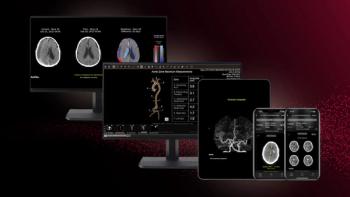
Report from SNM: PET measures brain chemistry associated with bulimia
PET has linked the behavioral treatment of bulimia nervosa with biochemical activity in areas of the brain associated with addiction and substance abuse, according to a study presented Sunday at the 2005 Society of Nuclear Medicine meeting in Toronto.
PET has linked the behavioral treatment of bulimia nervosa with biochemical activity in areas of the brain associated with addiction and substance abuse, according to a study presented Sunday at the 2005 Society of Nuclear Medicine meeting in Toronto.
Carbon-11 carfentanil PET imaging identified reduced µ-opioid receptor binding in the prefrontal cortex and insula of patients who responded positively to a 10-week course of cognitive behavior treatment, said Dr. Badreddine Bencherif, a nuclear medicine researcher at Johns Hopkins University.
The typical pattern of binge eating and purging persisted among patients when µ-opioid receptor binding was reduced in the cingulate cortex.
The results suggested to principal investigator Dr. Angela S. Guarda, director of the eating disorders program at Hopkins, that the involvement of the opioid system may explain the addictive quality of the eating disorder.
Bulimia, which most often affects women, involves an obsessive drive for thinness, prompting cycles of binge eating followed by vomiting to maintain low caloric intake. Opioids play a role in quelling painful sensations, heightening positive emotions, and creating a sense of reward.
C-11 carfentanil PET found that patients with relatively high opioid binding in the insula before treatment responded better to programmed training and counseling than did patients with low binding rates.
The success of C-11 carfentanil in this study may open the door to new applications of the agent at facilities equipped with cyclotrons to produce the short-lived radioisotope, according to Guarda, who was interviewed by SNM staff before the conference. It could help identify patients who are best suited for specific behavior treatment regimes and could provide quantitative measures to guide program design to improve treatment effectiveness.
Newsletter
Stay at the forefront of radiology with the Diagnostic Imaging newsletter, delivering the latest news, clinical insights, and imaging advancements for today’s radiologists.




























